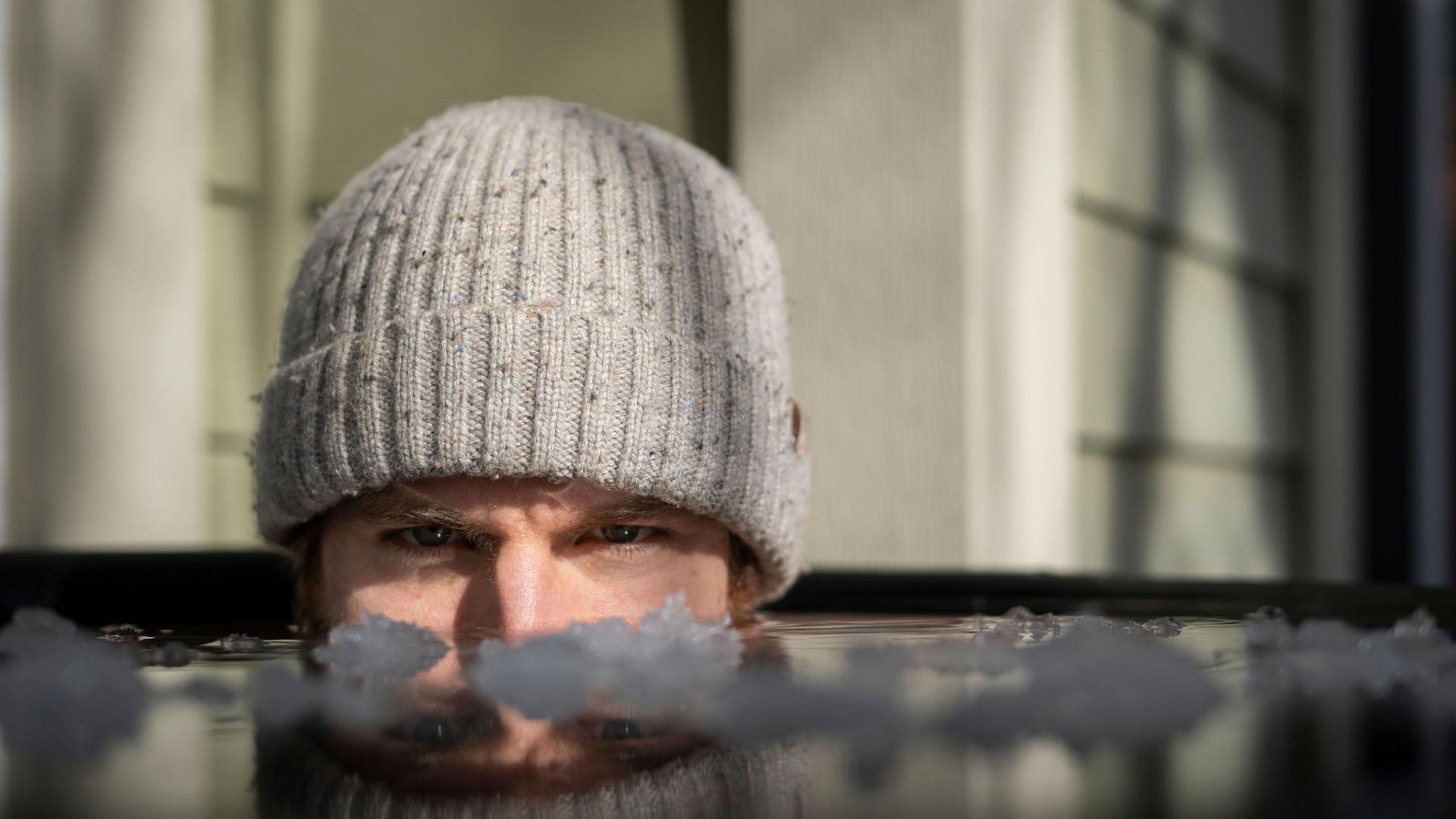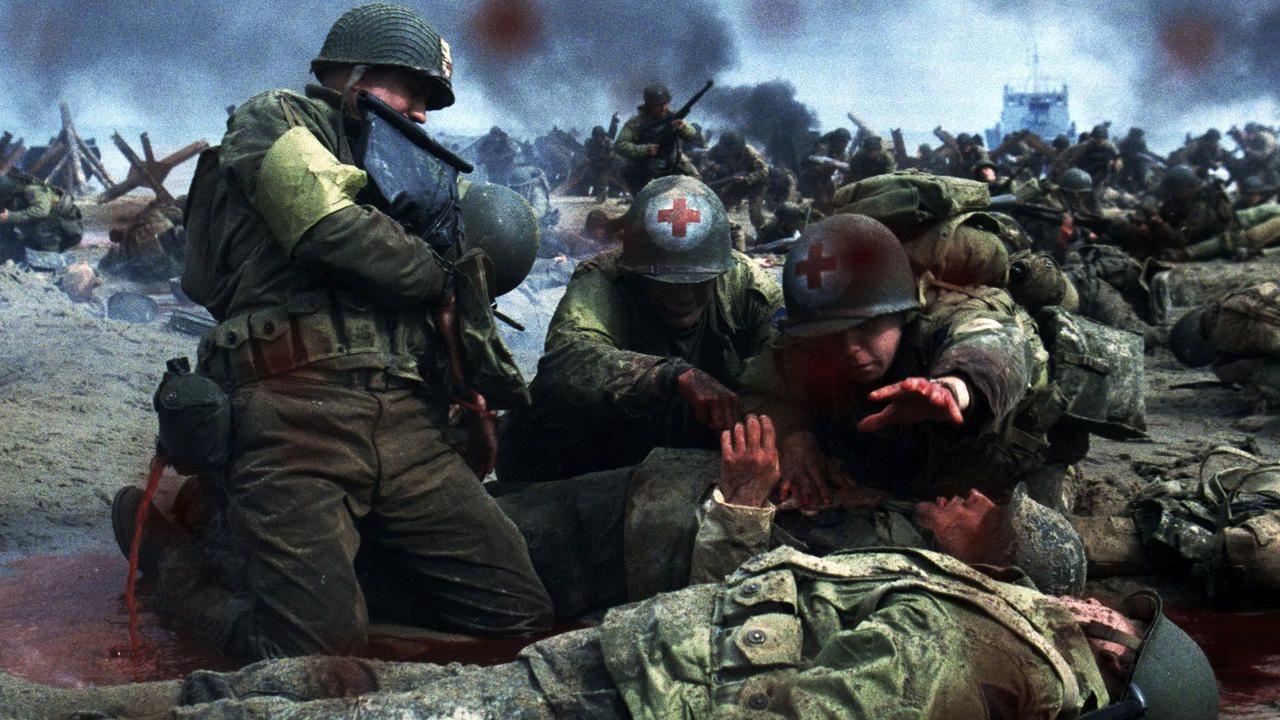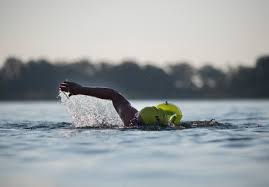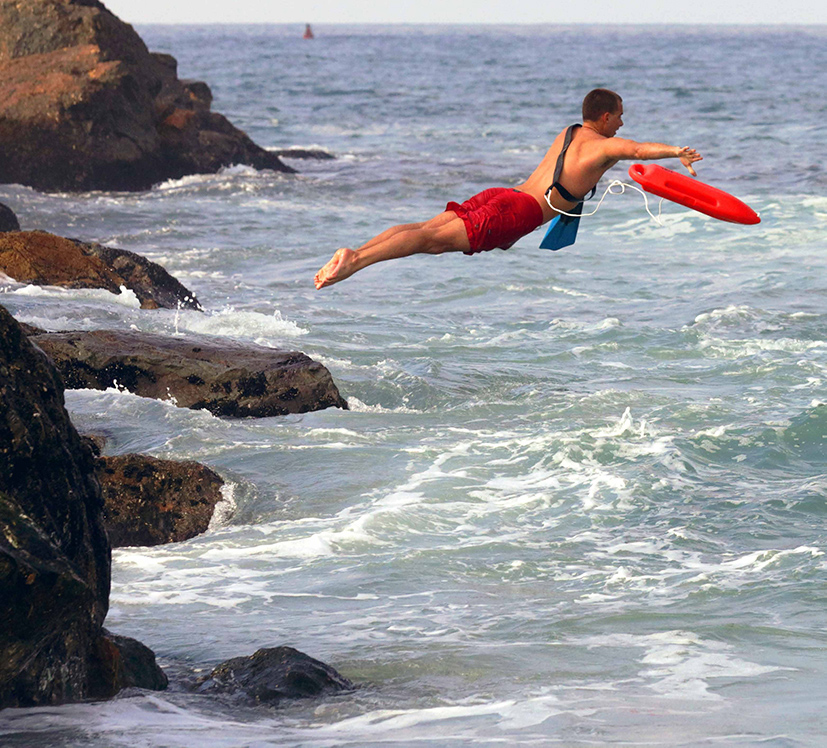
How Rescue Swimmers
Survive in Cold Water
16 March 2023 | By RSM Vince
Prior to the Wim Hof cold craze, elite military professionals and athletes incorporated frequent cold water exposure into their training schedules for the mental and physical benefits. Let's get into why.
WARNING:
Though we will be covering the benefits of cold therapy, individuals should consult with their physicians prior to undergoing the stresses of cold immersion. Regardless of physical health, it is important to progress gradually to allow one's body to grow accustomed to these stresses.
Military Cold Water History
When attending Helicopter Rescue Swimmer school in the winter of 2013, my peers and I all subscribed to what we called "The Church of Petty Officer Holt". Tyler Holt, now a rescue swimmer Chief Petty Officer, was our guru of Health and Fitness. Today, he's earned a Master's degree in that exact field.
During his time as a Coast Guard Helicopter Rescue Swimmer instructor, Holt was influential in many of the changes that occurred in candidate training and development at the North Carolina training center. This included:
- Influencing the evolution of candidates' training from a "beat them down" approach to a wiser form of training that included appropriate rest periods for maximum physical output and development;
- Instructing candidates proper foam-rolling techniques in a class format;
- Teaching effective sleep habits;
- The last was his recommendation of daily cold water exposure.
Though Holt was wary to avoid telling us directly to perform cold therapy, he did share the benefits of his own daily cold rituals. Note: This was well before most of us had been influenced by the Wim Hoff method hitting mainstream media.
Needless to say, it wasn't long before, every day, base personnel would slow down their vehicles to observe the group of crazy, half-naked rescue swimmer candidates, immersed in the waters of the Pasquotank River in freezing winter temperatures. Music and cackles filled the air as we'd dip those 10min every day.
So why would we torture ourselves so?
Latest Posts
-
How Rescue Swimmers Save Lives
21 November 2022
-
How to Get Faster in the Water Now
16 August 2022
-
-
3 Lifeguard Drills to Improve your Water Confidence
29 October 2018
Related Courses
During stresses of life, just like in cold therapy,
never underestimate the power of a prolonged exhale.
The Science
The WHY
Mental Benefits
-
Increases dopamine anywhere between 2.5 to 400% and sustains it for approximately 2.5hrs, thus increasing motivation and drive.
-
Raises the release of epinephrine (adrenaline) and neuroepinephrine (neurodrenaline), increasing focus, and desire/ability to move while also acting as a pain suppressant.
-
Improved Perceptual Speed, Visual Attentional Control, Working Memory (ability to remember information) and Energy.
-
Reduces stress, while improving mood and hormonal output.
-
Fortifies mental resilience and willpower.
- Helps train our ability to stay calm during fight-or-flight response.
Physical Benefits
-
Promotes Circulations.
-
Increases Metabolism.
-
Helps convert white fat cells (often the less desired bluberry fat where energy is stored) into brown fat (thermogenic fat which can increase your body's natural temperature and metabolism).
-
Reduces abdominal fat.
-
Reduces inflammation in general, especially post-exercise.
-
Causes vasoconstriction — the tightening of blood vessels — which helps to push out lactic acid.
-
Enhances the physiological ability to withhold cold temperatures.
- Can enhance strength and endurance training results.
Military Benefits
BUDS candidates know uncomfortably cold water more than most. Typically, the water temperatures in San Diego reach a high of 69°F and drop into the low 50's during the winter. In their training, SEAL candidates have developed a method of postponing hypothermia by shutting down their shivering response. Nevertheless, their body temperatures still drop, allowing them to achieve the benefits of hypothermia: a slower metabolism and lowered oxygen requirements which extends their dive time.
The WHEN
What Time?
Often less discussed is our body's temperature fluctuation associated with our circadian rhythm. Roughly, your core temperature is at it's lowest approximately 2hrs prior to waking up. Your temperature then continues to rise, peaking at it's highest temperature in the mid to late afternoon.
It is valuable to keep this in mind for when you choose to use cold therapy — early mornings and late evenings will offer a more difficult mental and physical challenge.
How Long?
Typically, following the first 15-30sec "shock period", you will calm down. I would recommend you occasionally stay in past that next "wall" period, which often comes between 2-4min after the initial submersion. As your body thermo-regulates, these walls will intermittently come and go, continuously challenging your mental fortitude.
PRO TIP: Instead of setting yourself timed goals, try setting yourself a set number of "walls" to overcome prior to starting every session.
Eg: One day you might just want to submerge and overcome that first "shock wall" in extremely cold water, while other days you might set yourself the goal of overcoming 2 walls of challenge within slightly less cold temperatures.
How Often?
Few peer reviewed studies cover this topic, though some mention 11min total per week divided into 2-4 sessions of 2-3min.
The HOW
3 Types of Cold Therapy
Here are the most common/accessible types of cold therapy in order of most effective to least:
- Cold Water Submergion: 2-10min up to the neck with hands and feet also submerged.
- Cold Showers: >1min.
- Cold Environment Exposure: >3min outside with minimal clothing.
Note: Cold water submersion creates > 4 times more heat transfer than cold air.
How Cold?
Uncomfortably cold to the point where you want to quit but you can safely keep going.
How to Overcome the Torture?
What should your mental state be? You basically have 2 options:
- You can try to calm yourself.
- You can grind it out.
NOTE: Challenging your pre-frontal cortex by doing math problems or trying to remember specific quotes/songs are valuable methods of training your brain to think while under tremendous stress (a crucial tool for any elite military professional).
Move or Stay Still?
If one stays still, the body expels heat thus creating a thermal layer around the body (kind of like a wetsuit). Movement breaks that thermal layer. So if you'd like to experience much colder temperatures and challenge your resilience even further; movement and/or river plunges can be, a fun variable to play with.
NOTE: If ever lost at sea, one can prolong their survivability in cold water by raising their legs and creating a bubble of warmer water. This same method can be used when in a group, by having everyone tread side-by-side in a circle with their feet raised and pointing inwardly.
Wim Hoff Breathing
For the purposes of elite military personnel, it may not be practical to practice the 10-15min Wim Hoff breath cycle prior to cold immersion as this does not mimic real world circumstances encountered in the field. For that reason, the most important breathing technique I personally recommend is simple: A LONG EXHALE.
Though challenging at times, implementing a long exhale when first entering the cold water has a surprisingly soothing/grounding effect on the mind. Aside from the fact that our heart rates slow during exhales, I find that inhaling feels very labored (almost like an asthmatic feeling) when one first enters the water. This can have the effect of inducing a feeling of panic.
The exhale, on the other hand, creates a calming effect. I've therefore concluded that the common saying "Take a deep breath in" when undergoing the traumatic stresses of life is false, rather than the more fitting phrase: "Release a long exhale".
Nevertheless, if time permits, trying the Wim Hoff breathing method can be a worthwhile experiment. Here's how to do it:
-
Get in a comfortable position;
-
Take a long inhale breath through the nose (fully inflating the stomach then the chest);
-
Exhale and exhale unforced through the mouth (this often results in what appears to be a quick exhale);
-
Repeat these breaths 30 to 40 times in short, powerful bursts (you may experience light-headedness, and tingling sensations in your fingers and feet. These side effects are completely harmles);
-
After the last inhalation, let the air out and stop breathing. Hold until you feel the urge to breathe again;
-
Repeat this cycle (step 1 through 5) 3-4 times.
- Once completed, take your time to bask in the bliss. This calm state is highly conducive to meditation — don't hesitate to combine the two.
Some of the benefits associated with this breathing exercises include:
- Increased concentration and focus;
- Improved sleep quality;
- Increased energy levels;
- Reduced stress and anxiety;
- Enhanced physical performance;
- Boosted immune system.
WARNING: DO NOT combine the Wim Hoff breathing method with underwater breath holding exercises. Wim Hoff's breathing cycle induces hyperventilation which purges out CO2 (the body's natural mechanism that reminds us to breath). Combining Wim Hoff's method with apnea drills can very easily cause shallow water blackouts. We've dedicated an entire chapter of the Hold your Breath like a Helicopter Rescue Swimmer course to that exact topic.
Cold Water = Slowed Heart Rate = Longer Breath Holds
The Power of the exhale during initial submersion.
Helps train our ability to stay calm during fight-or-flight response.
Increased epinephrine means better focus, and drive.
How Cold? ...as cold as you can uncomfortably tolerate safely.
Stillness creates a thermal layer.
Movement means increased cold.How
Cold Water Clips
At 5:56 in this video, RSM Vince and Cody review the famous hypothermia scene in the 2006 film The Guardian.
RSM Tips for Cold Water Immersion. Watch as Vince freezes his nuts off in <-20°C winter air temps in Canmore, Canada.
Stanford University School of Medicine professor Andrew D. Huberman discusses the in depth science behind cold therapy.
Rescue Swimmer Mindset
Podcast
Listen as RSM Vince and Men's Mental Health Specialist, Calen Martents, discuss cold therapy, unhealthy coping mechanisms, social media addiction, breath-work, meditation, healthy habits and how elite athletes can better their physical and mental well-being.


